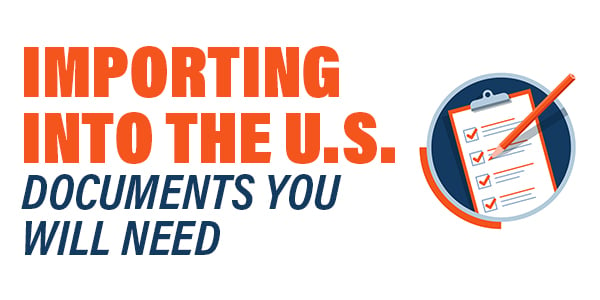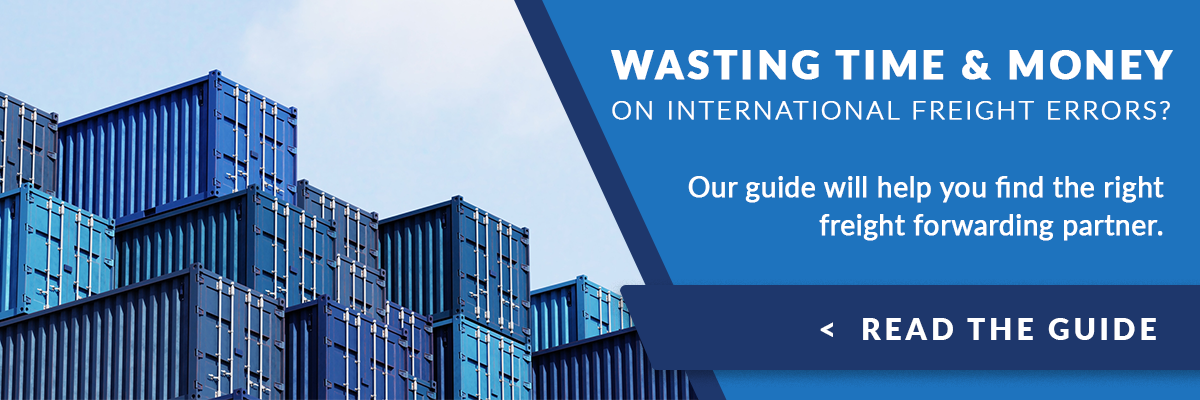
What could go wrong with importing? With the documents required, the answer to this question is “everything.”
Incorrect information on supplied documents or missing documentation can delay deliveries and lead to expensive consequences such as duties and fines, congestion delays, and late shipments.
The best way to avoid these problems is to understand the most common documents required to import into the U.S. and to supply accurate documentation upfront.
Expect to file the following documents when importing into the U.S.:
- ACE manifest (for land-border imports from Canada or Mexico)
- Commercial invoice
- Packing list
- Bill of Lading
Each document works together to provide critical information for Customs to clear imports for entry.
ACE Manifests
CBP’s Automated Commercial Environment (ACE) is an electronic filing system that replaces the time-consuming, labor-intensive import filing process. Filing an ACE electronic manifest allows Customs to link the manifest information to the Customs entry data and determine admissibility for imports quickly.
ACE uses technology and automation to create a streamlined and efficient process for the global exchange of safe and legitimate goods. The benefits are faster processing, less paperwork, and access to partner government agencies (PGAs) in one spot.
If an importer has hired a carrying company, this company prepares and files the ACE electronic manifest. Without a freight partner, importers must prepare their own documents. This requires importers to get a carrier code or permission from Customs to use their broker’s carrier code. Self-filing only makes sense when an importer routinely ships across the border with their own fleet of vehicles.
Commercial Invoice
Customs requires a commercial invoice when importing goods into the U.S. A properly prepared commercial invoice provides enough information for Customs agents to determine the admissibility of goods.
A commercial invoice is a legal document issued by exporters to importers in an international transaction. The document serves as a contract and proof of sale and helps Customs agents calculate taxes, tariffs, or duties that apply to the shipment. It also speeds up the clearance process.
This document contains detailed information about the shipment and should include:
- Quantity of items
- Shipping weight
- Value of each item
- Country of Origin
- 10-digit Harmonized Tariff Schedule of the United States (HTUS) number
- Name and address of seller
- Name and address of importer of record
- Name of responsible party for the importer
- Phone number of responsible party
- Buyer’s Tax Identification Number
- Destination address for the goods
- Carrier code or shipment control number
Certain tariff numbers will require importers to report the exact number of items being shipped. For example, if importing shoes, the commercial invoice must detail how many pairs of shoes are being imported.
Customs also requires importers to report the proper value of the goods. Even if shippers plan to transfer assets, they still must declare fair market value and specify the currency. It is important that the proper valuation method is used.
Incomplete invoices can delay shipments—even when using a Customs broker. Failure to sign and date the bottom of the form can also cause shipment delays. Here, someone must locate the missing information or get the required signatures before Customs will clear the shipment.
Packing List
A packing list provides exporters, importers, and international freight forwarders with shipment details such as how items are packed, the dimensions and weights of each package, and the marks and numbers on the outside of each package.
This document should contain information from the commercial invoice and itemize package contents, whether in a box, pallet, or container. It also must include the weights and measurements of each item and a detailed product list. Attach the packing list to the outside of the packaging so Customs can check it to verify cargo.
The packing list and commercial invoice go hand in hand, as both detail pertinent information that aids Customs clearance. Though not required, the packing list is nice to submit as it can help answer and verify questions as they arise.
Bill of Lading
A Bill of Lading is another essential document that aids the Customs clearance process.
Carriers issue this commercial document to the shipper of goods as evidence or proof of shipment. This document identifies the cargo’s legal owner, and ensures importers receive their goods and exporters get paid for them.
Customs does not require a Bill of Lading. However, a Bill of Lading is a backup document that helps verify information when Customs has questions.
Pay Attention to USMCA Certifications
When importing goods between the U.S., Canada, and Mexico, importers must pay attention to the United States-Mexico-Canada Agreement (USMCA), which replaced the North American Free Trade Agreement (NAFTA) that previously governed North American trade. It is important to note that claiming preferential tariff treatment under the USMCA is optional.
Importers must have a USMCA Certification on file for all products where preferential tariff treatment is claimed. This document contains specific information about the products on each shipment and is required when importing or exporting goods (where USMCA is being claimed) between Canada, Mexico, and the United States.
The USMCA certification differs from the NAFTA certificate but achieves the same purpose. It helps Customs determine whether goods entering the U.S. qualify for preferential tariff treatment.
This document contains nine data elements:
- The certifier of the goods.
- The exporter of record.
- The producer of the goods being shipped.
- The importer of record.
- The Harmonized Tariff System’s (HTS) description and the corresponding 6-digit code that classifies it.
- The criteria which qualify origin.
- If the certificate covers multiple shipments, also known as the blanket period.
- The authorized date of the shipment and a signature.
Certification formats can vary, but they must contain all required information. Importers can file this document electronically but should also include the physical document with the shipment.
Only an importer, producer, or exporter can fill out this form, and the information must be accurate and include enough detail to classify the goods. The only Countries of Origin named can be Canada, Mexico, or the U.S.
Importers can opt to sign and date the USMCA certificate digitally or physically with pen and ink. However, they must fill out the form completely before submitting it to a broker. Incomplete documents slow down the process because once documents are sent, Customs considers a truck on its way.
Know Your PGAs
A PGA is a division of the federal government that regulates specific products imported into the U.S., along with Customs. Approximately 50 PGAs regulate products entering the U.S. Some notable PGAs include:
- National Highway Traffic and Safety Administration (NHTSA)
- Environmental Protection Agency (EPA)
- Food and Drug Administration (FDA)
- United States Department of Agriculture (USDA)
- Animal Plant Health Inspection Service (APHIS)
- Consumer Product Safety Commission (CPSC)
- Fish and Wildlife Service (FWS)
- Department of Commerce (DOC)
PGA-regulated products may require permits or additional information upon entry. Each PGA maintains an import/export guide listing its requirements. Later, Customs verifies that importers submitted the necessary permits and documentation for each PGA.
It’s vital to identify the PGA upon filing, as Customs may require additional information and proof. Be sure to research commodities for PGA requirements before ordering goods from foreign suppliers and identify which ones fall under multiple PGAs.
If Customs flags a tariff number for PGAs, importers must provide more information. Customs brokers can give guidance on tariff numbers to help importers understand and correctly classify their goods.
Failing to supply all documentation upfront can significantly delay shipments and come at a prohibitive cost in duties, fines, and increased congestion. Ensure your documentation is accurate and compliant with the help of a Customs broker.


